One of the most important aspects that receive increased attention when decorating a kitchen is lighting. It is extremely important to correctly plan the placement of light sources, its direction, intensity and brightness. After all, if its level is insufficient, the room will seem dark and the furniture will appear dull.
In addition, the lack of light in the kitchen or its unsuccessful dispersion provokes overwork of the people in the room due to eye strain.
If we are talking about the constant use of the kitchen for its intended purpose, for daily cooking, then the importance of full illumination of the work surface cannot be overestimated. It, without a doubt, must be carefully thought out and well installed.
In view of these circumstances, LED strip in the kitchen is recognized by many experts and consumers as the optimal choice for
Modern ways to solve the lighting issue
The legacy of many years of design development can be considered the use of two types of light sources in the kitchen interior: lighting and backlighting.
Their functions are obvious. The main task of lighting is the general supply of light to the room, while the lighting is designed to play a decorative role or facilitate the performance of various specific actions (manipulating bulk products and knives, cutting small vegetables, looking after numbers on sensors, searching for objects inside cabinets).
Among the main light sources are the following:
- of varying intensity penetrating through windows.
- Centralized lighting of the entire room from under the ceiling.
- Ceiling chandeliers, which involve a low lamp position directly above the dining area.
You cannot do without this light, but it is often not enough. That is why owners of apartments, houses and offices are increasingly resorting to installing lighting:
- Spotlights built into walls or cabinets.
- Installation of LED strip in various ways.
- All kinds of portable lamps and fixtures.
LED strip in the kitchen: reasons for popularity
The main argument in favor is that it is not necessary to plan their placement in advance, draw complex diagrams and cut holes in the kitchen furniture. An LED strip for kitchen lighting can be easily installed at the very end of renovation work or at any stage of the room’s operation.
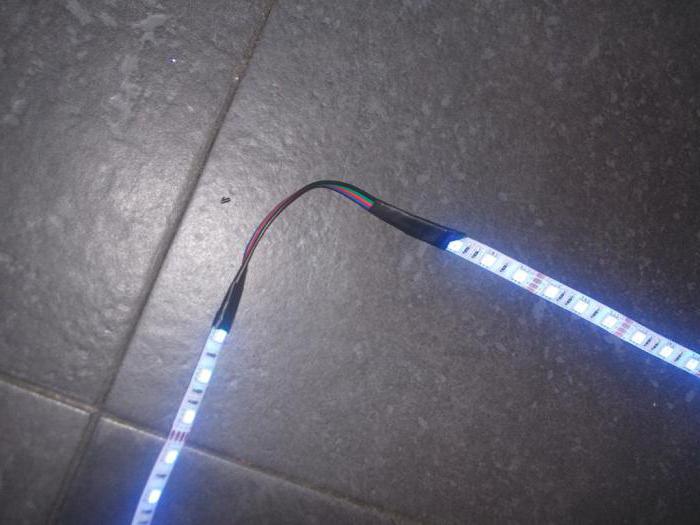
In addition, this type of backlight has the following advantages:
- Environmental friendliness.
- Safety.
- Durability.
- High degree of intensity and brightness.
- Resistance to changes in temperature and voltage.
- Economical.
The optimal choice for organizing kitchen lighting
Improvements and the latest production technologies have led to the fact that LED strip in the kitchen can be installed almost anywhere, regardless of the angle of the surface, its quality, the presence of moisture or the proximity of high temperatures. The degree of stability of the tapes is determined in accordance with the markings applied during manufacture.
There are strips on which the LEDs are covered with insulating silicone, so that water does not get inside the device. Such tapes can be safely placed near sinks and stoves; they are very easy to clean from dirt.
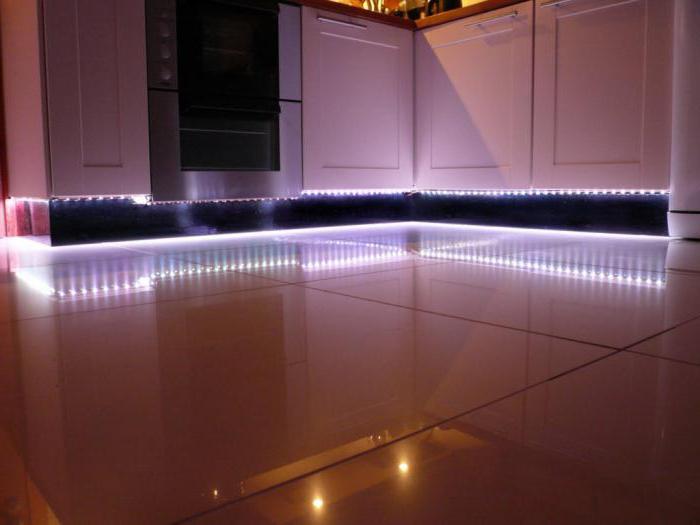
Often, 220V LED strip is used for functional or decorative lighting of countertops, the interior of wall cabinets, tables in the plinth area, suspended ceilings, and bar counters.
Basic principles of LED lighting installation
Installation of LED strip is simple and does not require too deep knowledge of electrical circuits.
Often, the simplest tools of a soldering iron), insulating materials (insulating tape or special caps), as well as double-sided tape, if the tape itself does not have an adhesive layer, are sufficient. In the case where the lighting source is planned to be covered with a profile, tools will be needed to fix it: a drill and staples.
Installation of the tape begins after careful measurement of the surface acting as the base.
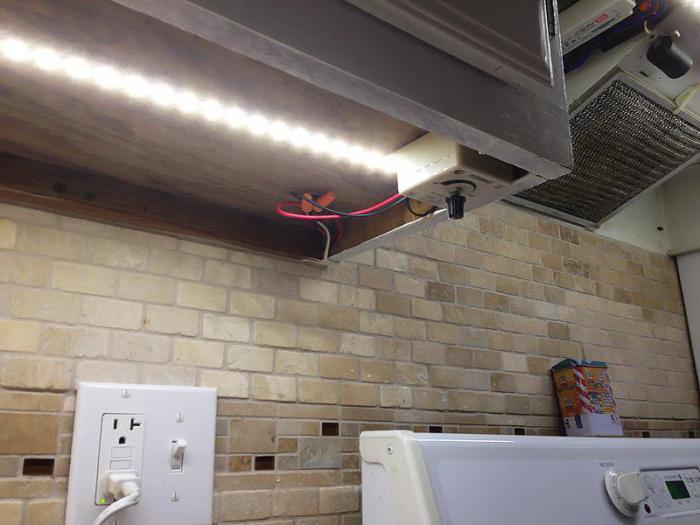
The tape is cut to size, the edges are cleaned and insulated, and glued to the selected surface.
Sometimes, to fix the LED strip on an uneven surface, a metal strip is used as a base.
When choosing a block for an LED strip, you should use the generally accepted algorithm for calculating its power: you should find out the power of one meter and multiply it by the length of the strip used.
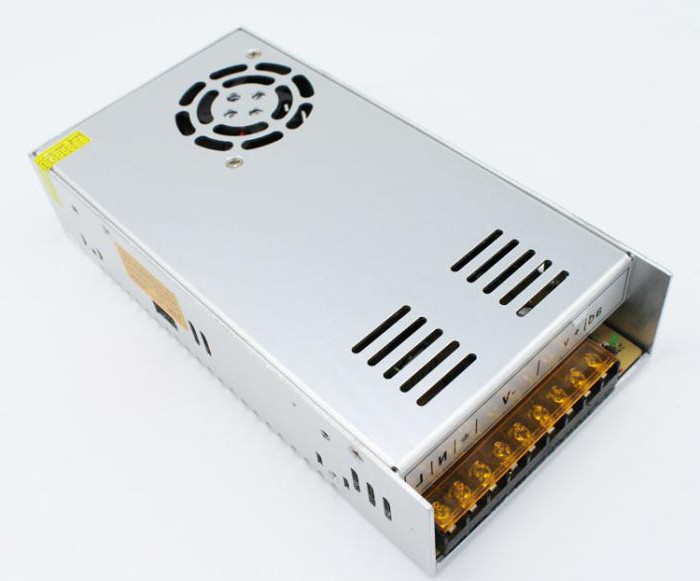
At the same time, you should not load the block one hundred percent. Experts recommend providing a free reserve equal to approximately 20% of the unit’s power in case of voltage surges.
Taking into account the specifics of the kitchen atmosphere, it is advisable to choose a moisture-resistant block or hide it in a specially installed box.
Tabletop lighting with LEDs
The main purpose of almost any lighting in the kitchen is to provide light to the work surface. The 220V LED strip copes with this task perfectly.
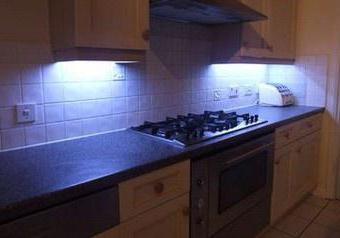
You can install several short strips or use one long piece. LEDs are suitable for fixing anywhere:
- Under the lower horizon of wall cabinets.
- On the plane of the wall.
- Directly on the countertop surface.
- On the side edges of cabinets and tables.
When choosing the option in which the tape is attached to the tabletop itself, you should think about partially hiding the LEDs by installing a profile. This measure will avoid blinding bright lighting and at the same time protect the tape from moisture and inevitable contamination.
To fix LED strips on the tabletop, it is best to use products with a medium or high level of protection against water (they are indicated by the symbols IP65 and IP68).
Mounting LED strip under wall cabinets
The method in which LED strips in the kitchen are installed under the upper cabinets has become almost classic.
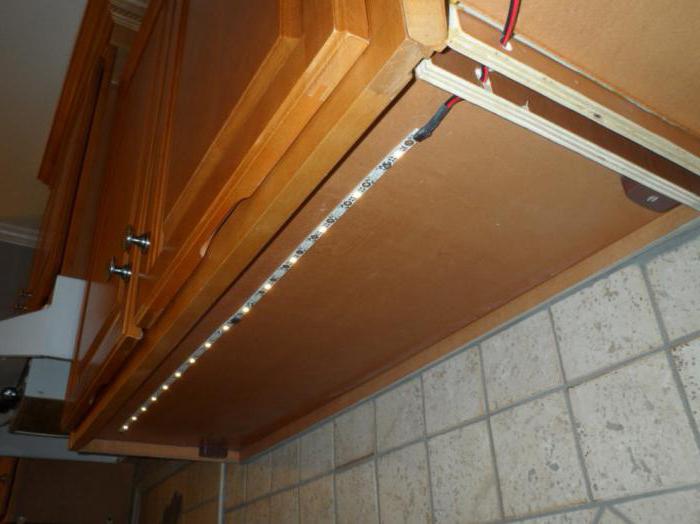
This is not surprising, because this approach opens up many opportunities for effectively using the many advantages of this type of lighting.
This does not require excessive care and precision can be easily placed inside the cabinet, and the directivity of the light clearly onto the work surface allows you to protect your eyes without loss of intensity.
Decorative lighting in the kitchen
Using LEDs to decorate your kitchen is a great example of a combination of rationality, practicality, effectiveness and aesthetics.
Manufacturers offer a wide range of LEDs for a variety of purposes and with different parameters. Based on the purpose and location of fixation, you can select LEDs of a certain intensity, power, color, shape and frequency of location on the tape.
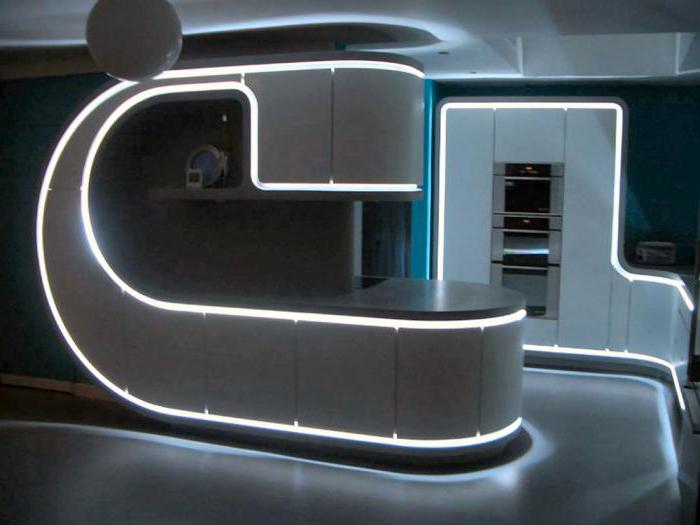
Installing an LED strip in the kitchen as a decorative element is not very different from installing other types of similar lighting. The main feature is the presence of a dimmer. This is a switch that controls the sequential change of the color of the glow; the backlight can also consist of one color, the intensity of which changes periodically.
The dimmer must be installed together with the tape power supply, since the wires must be connected to it in the same order.
A bright and cheerful kitchen, pleasing to the eye every day, can lift your spirits even on the stormiest Monday. Positive emotions and positivity for all family members are certainly worth the effort that will be required to equip the kitchen with LED lighting.